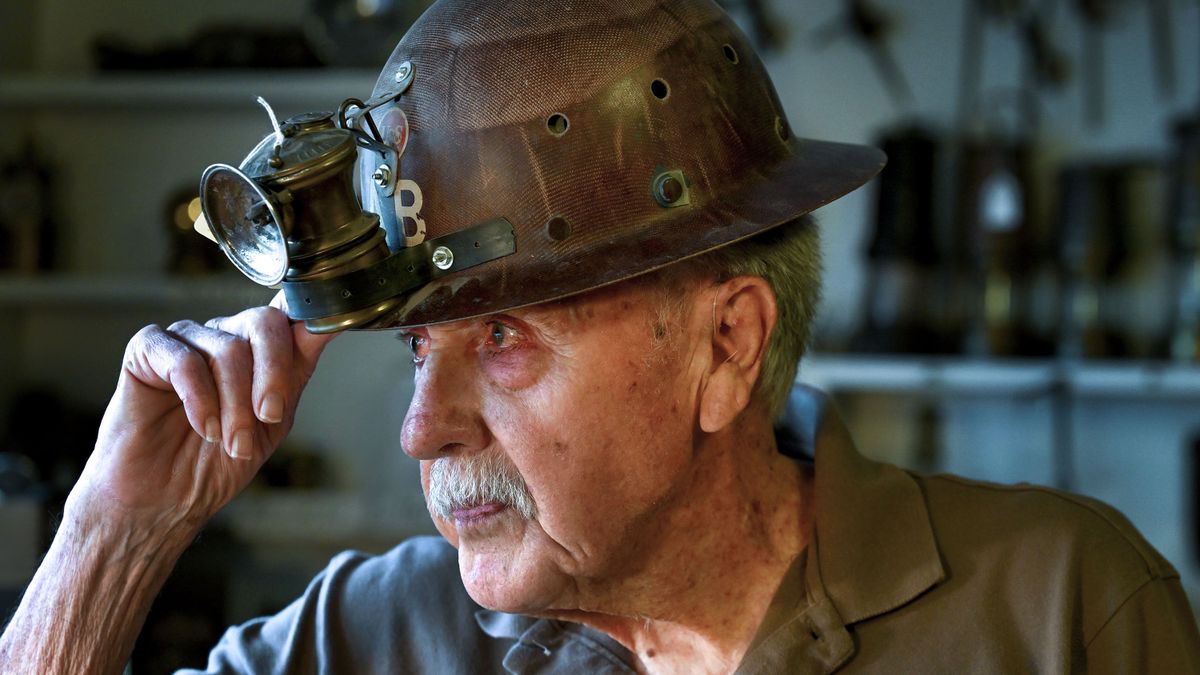The Collector: Retired geologist collects mining equipment, artifacts and memorabilia

The mining ore cart next to his garage offers a clue to what Bob Weldin collects.
Weldin, a geologist, spent 30 years working for the U.S. Bureau of Mines as a mining engineer. When he retired in 1990, he found he couldn’t quite leave his career behind and began collecting mining equipment, antiques and memorabilia.
Rows of mining candlesticks, oil wick lamps and carbide lamps illuminate one area of his expertise.
“I’ve given talks on underground mine lighting,” he said. “It’s my specialty.”
For many years, metal candle holders were the only source of light available to miners. They feature a looped handle, a thimble to hold the candle, a long sharp point and a hook. The holders were either stuck into timbers or hung from the rock walls of the mine.
Before helmets were available, miners affixed the candlesticks or oil wick lamps to cloth hats.
“Cave dwellers used a shell with some kind of oil or fat to see in the caves,” Weldin said. “When people started mining, they weren’t much beyond that.”
Shortly after 1900, miners began using carbide lamps. Weldin has many types of those lamps and lanterns in his collection, as well as the carbide cans that held the fuel for them.
“When I went to work in 1960, they issued me a carbide lamp to put on my hat,” he said.
As a past president of the National Mining History Association, Weldin enjoys uncovering the stories behind the items he collects.
“You can’t be a good collector unless you’re a good historian,” Weldin said. “If I fall in love with it, I have to find out all about it.”
He picked up a small metal canary cage with a wooden handle that predates gas masks.
“If the canary died, you got out of the mine,” Weldin said. “The problem was the guys that carried the canaries got attached to them.”
A metal lunch pail from the same era features a spot for a coffee mug and metal clips to hang it from the heavy belt miners buckled around their waists before starting their shift.
“You’re tired before you even go into the mine,” Weldin said.
Mining pickaxes hang from one wall, and helmets made of various materials are stacked near a gas mask that hangs by its straps. Nearby filing cabinets house 100 to 150 canceled mining stock certificates
.
He also owns several antique seal embossers. During the Gold Rush, shady characters would use the embossers to embellish worthless pieces of paper that they then sold as mine stock certificates.
Weldin pointed out the tools of his former trade, including several types of Geiger counters used to detect radioactive rocks and minerals.
A tall table, just like the one he spent countless hours at in the field, is evidence of how much has changed over the years.
“As a geologist, I spent a lot of time surveying,” he said. “We used plane table mapping.”
Using an alidade to sight elevation and distance, he then drew the corresponding lines on paper.
“Now it’s all done by satellite,” he said. “All of this stuff is obsolete but collectible.”
Also obsolete – his map collection.
“Want to know where the gold is?” he asked. “I’ve got the maps. I can show you where it was.”
Antique gold scales in a glass case reveal the seriousness of valuing the precious commodity.
“These are very accurate,” he said.
“They put them in glass cages so that a breeze couldn’t affect the weight of the gold.”
Empty mercury jugs perch atop bookshelves filled with volumes of mining history. To enhance gold recovery from hydraulic mining, liquid mercury was added to troughs in a typical sluice. The high density of mercury allowed a gold and gold-mercury amalgam to sink while sand and gravel passed over the mercury and through the sluice.
Dozens of small baby food jars contain ore samples.
“I’ve got ore samples from most of the mines I’ve been,” Weldin said.
While downsizing some of his collection may be in his future, he said he does have one regret.
“I sold my blasting machine recently,” he said. “I wish I would have kept it.”
His collection reminds him of the people he worked with, the land he walked and the mines he visited.
“I enjoy the memories it brings and the history of mining,” Weldin said.